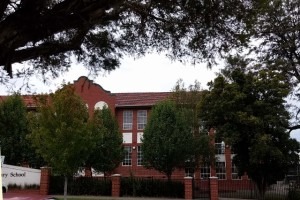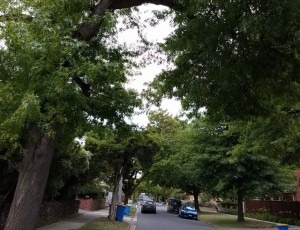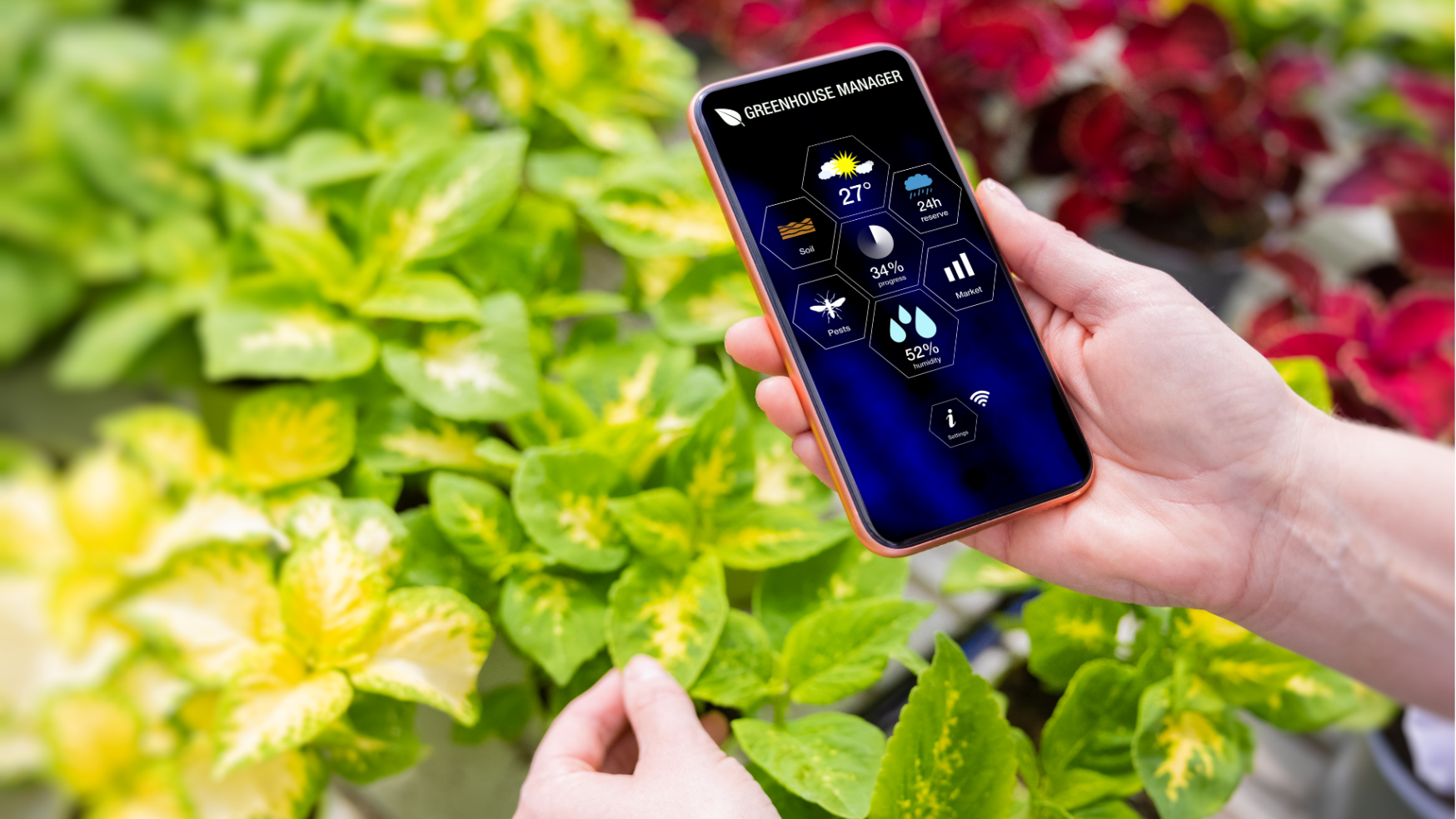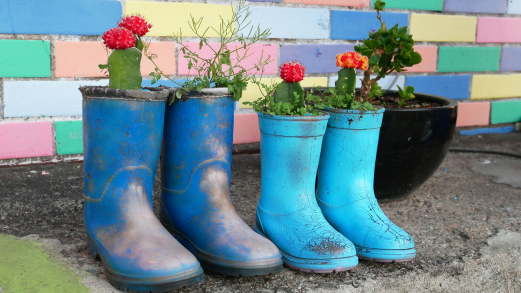Many people would take it as a given that parks, gardens and trees have their own aesthetic and intrinsic values. However, so often in capitalist societies, decisions are based on the economic or monetary value of systems and their components. In such systems, as soon as something performs a function or provides a service that is valued, then it too has an economic value. It worth thinking about the economic value of the benefits provided by our gardens and trees because it increases their status in decision making processes1.
Reducing Temperature
 The shade from trees can lower temperatures by up to 8°C, which can reduce air conditioner use by 12-15% and also decreases carbon emissions from our largely brown coal generated electricity2. Two medium sized trees, planted in the right position (usually to the north or west) can save up to $180 per year off a domestic electricity bill through lower air conditioner use. The removal of large trees from school grounds after the Black Saturday fires removed shade and required the installation of large shade sails to protect students from excessive summer sun.
The shade from trees can lower temperatures by up to 8°C, which can reduce air conditioner use by 12-15% and also decreases carbon emissions from our largely brown coal generated electricity2. Two medium sized trees, planted in the right position (usually to the north or west) can save up to $180 per year off a domestic electricity bill through lower air conditioner use. The removal of large trees from school grounds after the Black Saturday fires removed shade and required the installation of large shade sails to protect students from excessive summer sun.
Moderating Wind
It is difficult to place a value on the role trees play in reducing wind speeds of up to 10% during storms and protecting property from hail damage. However, we do know that under climate change winds will be stronger and that severe storms will be more frequent, and that trees filter and deflect wind in they are planted in appropriate places. Indeed, it is often forgotten that properly planted and positioned trees can reduce the swirling of the wind during major fire events, making fire fighting safer.
Reducing Water Runoff
Trees are very good at holding and absorbing water during heavy rainfall events. This is now being recognized as an important part of storm water run-off management as it can reduce localized flooding. In many parts of Australia, while annual rainfall is likely to fall under climate change scenarios, the rain that does fall is likely to occur in heavier downpours. In many places, the storm water pipes are not large enough to cope with the extra volume of water and so water is now being diverted to open space and tree pits to ease the flow, which will reduce local flooding and save the cost of retro-fitting bigger pipes.
Increasing real estate value
 Determining a monetary value that appropriate trees add to real estate can be difficult, but a conservative estimate of 5% of the total value has been used in the USA and a figure of about 5.4% has merged from research undertaken in Brisbane. Real estate agents have recognized the value of a good tree in a front garden at about $5,000 for a suburban property and earlier work had estimated that a tree-lined nature strip added 30% to properties. There is also an indirect but significant financial benefit for a local council in increased house prices, which are reflected in higher council property rates.
Determining a monetary value that appropriate trees add to real estate can be difficult, but a conservative estimate of 5% of the total value has been used in the USA and a figure of about 5.4% has merged from research undertaken in Brisbane. Real estate agents have recognized the value of a good tree in a front garden at about $5,000 for a suburban property and earlier work had estimated that a tree-lined nature strip added 30% to properties. There is also an indirect but significant financial benefit for a local council in increased house prices, which are reflected in higher council property rates.
Excessive tree removal in part of a council’s area of control could impact on its income when properties are next valued for rating purposes. Given that these are significant financial considerations, it is not difficult to envisage a situation where the unnecessary removal of a safe and healthy tree from a streetscape could precipitate legal action by a resident for the loss of property value. I am often amazed at how seldom the effects of tree removal on real estate value are considered until after the tree is gone and the loss is realized.
Improving Health
Treed open spaces improve human heath, extend life spans, reduce violence and vandalism, and lower blood pressure. It is not for aesthetic reasons that hospitals now have gardens, even if they are many floors up. Their presence and visits by patients speed recover and shortens time until discharge, which reduce the costs of hospitalization. The vegetation also humidifies the air which can ease breathing and reduce the need for medication in those with respiratory difficulties. It is often forgotten that the fires of Black Saturday killed 172 people, but the heat wave surrounding it was responsible for 374 deaths. In reducing the urban heat island effect the shade from trees can substantially reduce excess deaths that occur3, predominantly among the elderly, during heat waves.
There is ample evidence that treed landscapes also foster both active and passive recreation, which in return significantly reduces annual medical expenses for each 1% increase in the population recreating1. Green and leafy environments are vital tools in dealing with children lacking exercise and becoming obese, encouraging an ageing population to exercise and curbing ever-increasing health costs. Indeed there are several studies indicating that interaction with trees is a necessary part of childhood development as well as being a foundation of the human condition.
In many Australian cities, new house blocks are becoming smaller and smaller and in the green and leafy suburbs where house blocks were larger land has been subdivided for townhouses, multi-unit developments and on a larger scale dense modern housing. While developers are maximizing their yields, at a time of climate change, it is worrying that the diminution of both private and public open spaces by urban development puts at risk long term sustainability. In many of these situations there is insufficient open space – public or private – for the planting of trees and the opportunities for the role of vegetation in ameliorating the heat island effect, lowering wind speed, providing shade and reducing energy use are lost. Even the roads are so narrow that nature strip trees often don’t survive the quest by residents for parking. This raises questions about the economic viability of such development, as well as their environmental sustainability.
Tree cover in many Australian cities is declining, particularly with the loss of private open space. While the damage and nuisance values attributed to trees are well-known, the benefits they provide are often under-appreciated. Cities are biodiversity hot spots due to the variety of habitats available in front and back yards. For most people planting the right tree in the right place at the right time for the benefit of future generations is a significant legacy. What else delivers so many benefits immediately: benefits that last centuries into the future, which prolong healthy lives and make cities both sustainable and livable?
Dr. Gregory Moore is a Senior Research Associate, School of Ecosystem and Forest Sciences, Burnley College, University of Melbourne.
References
1. McPherson E G (2007) Benefit based tree evaluation. Journal of Arboriculture & Urban
Forestry, 33 1–11.
2. Moore G M (2012) The Importance and Value of Urban Forests as Climate Changes
The Victorian Naturalist. 129 (5) 167-174.
3. Nicholls N, Skinner C, Loughnan M, Tapper T. (2008) A simple heat alert system for Melbourne, Australia. International Journal of Biometeorology 52, (5) 375-384.
Related Articles:
Citizen Science: A Pathway to Gardening Success and Biodiversity Conservation
In recent years, the realm of science has experienced a remarkable transformation, one that invites people from all walks of life to participate…
A Sustainable Gardener’s Guide to Thrifty Gardening
Creating an eco-friendly and cost-effective garden involves more than just nurturing plants; it's about adopting a sustainable approach that…




